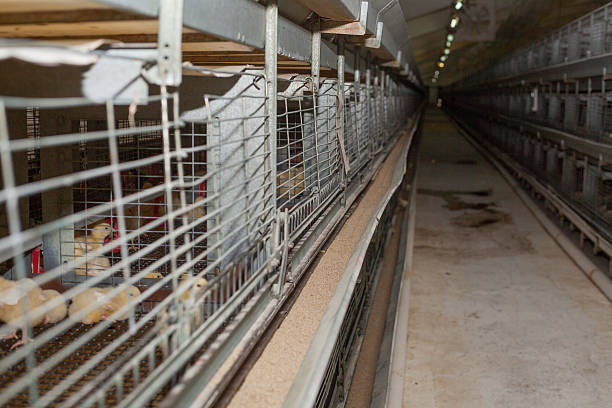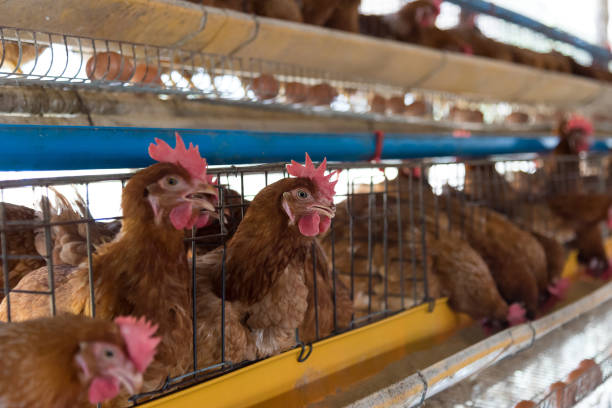Finding the Right Poultry Cages: A Guide for African Poultry Farmers
Finding the Right Poultry Cages: A Guide for African Poultry Farmers
Poultry farming in Africa is experiencing significant growth, playing a vital role in food security and economic empowerment. As the industry expands, the importance of proper housing for poultry, particularly through the selection and utilization of appropriate poultry cages, becomes paramount. Choosing the right poultry cages can directly impact the health, productivity, and profitability of your flock. This guide aims to equip African poultry farmers with the knowledge necessary to make informed decisions when selecting poultry cages.
Understanding the African Poultry Farming Landscape
Before diving into the specifics of poultry cages, it’s crucial to acknowledge the diverse landscape of poultry farming in Africa. Farming practices vary widely based on climate, available resources, market demands, and cultural preferences. From small-scale backyard operations to large, commercial farms, the needs and requirements for poultry housing differ significantly.
Many traditional poultry farming methods in Africa involve free-range systems. While these methods offer advantages in terms of animal welfare and potentially lower initial investment, they also present challenges like increased risk of predation, disease outbreaks, and reduced control over feed intake and egg production. As farmers aim to improve efficiency and increase yields, there’s a growing shift towards more controlled housing systems, where poultry cages play a key role.
Why Poultry Cages Matter: Key Benefits
Implementing a well-designed cage system offers numerous advantages for African poultry farmers:
Improved Hygiene: Cages elevate birds off the ground, reducing contact with manure and litter. This helps minimize the spread of diseases and parasites, leading to healthier flocks and reduced reliance on antibiotics. Keeping your birds clean leads to cleaner eggs too!
Increased Egg Production: In layer farms, cages provide a controlled environment that optimizes egg production. Individual compartments allow for better monitoring of each hen, ensuring adequate feed and water intake. The reduced stress environment can also contribute to higher egg output.
Better Feed Conversion Ratio: Cages minimize feed wastage by preventing birds from scratching and scattering feed on the ground. The controlled environment allows for precise feed management, leading to improved feed conversion ratios and reduced feed costs.
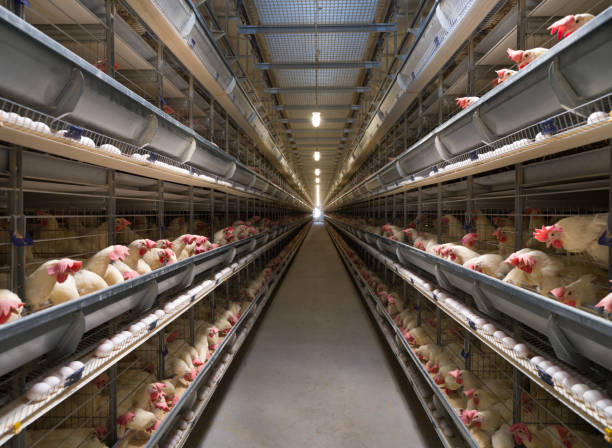
Easier Management: Cages simplify tasks like feeding, watering, egg collection, and waste removal. This reduces labor requirements and allows farmers to manage larger flocks more efficiently.
Reduced Mortality: By protecting birds from predators and harsh weather conditions, cages significantly reduce mortality rates, resulting in higher overall flock survival.
Optimized Space Utilization: Cage systems allow you to house more birds in a given area compared to free-range or deep litter systems, maximizing space utilization and increasing overall farm capacity.
Types of Poultry Cages for Different Needs
The market offers a variety of poultry cages, each designed for specific purposes and stages of poultry production:
Layer Cages: Designed specifically for egg-laying hens. These cages typically feature individual compartments for each hen, a sloping floor for easy egg collection, and integrated feeding and watering systems. Layer cages can be arranged in single tiers, stacked in A-frames, or configured in H-frame systems for maximized space utilization.
A-Frame Layer Cages: Cost-effective and easy to install, ideal for smaller-scale farms.
H-Frame Layer Cages: Offer better ventilation and easier manure removal, suitable for larger, more intensive operations.
Stacked Layer Cages: Maximize space utilization in vertical space, more suitable for commercial farms with larger flocks.
Broiler Cages: Designed for raising meat chickens (broilers). Broiler cages are typically larger than layer cages to accommodate the faster growth rate and larger size of broiler chickens. They often feature mesh floors for easy manure removal and adequate ventilation to prevent heat stress.
Chick Cages (Brooder Cages): Used for raising chicks from day-old to a few weeks old. Chick cages provide a controlled environment with supplemental heating and easy access to feed and water, crucial for ensuring high survival rates and healthy early development.
Breeder Cages: Designed for housing breeding chickens (both hens and roosters). Breeder cages are typically larger and more robust than layer or broiler cages to accommodate the needs of mature birds. They often feature nest boxes for egg laying and allow for controlled mating.
Key Considerations When Choosing Poultry Cages
Selecting the right poultry cages requires careful consideration of several factors:
Bird Welfare: Animal welfare is paramount. Ensure the cages provide adequate space for birds to move freely, stand, turn around, and stretch their wings. The cage material should be smooth and avoid sharp edges to prevent injuries. Proper ventilation is essential for maintaining air quality and preventing respiratory diseases.
Cage Material and Durability: Choose cages made from high-quality, durable materials that can withstand the harsh African climate. Galvanized steel is a popular choice due to its resistance to corrosion and rust. Ensure the cage structure is strong and stable to prevent collapse or damage.
Ventilation: Adequate ventilation is crucial for maintaining air quality and preventing heat stress, especially in hot and humid climates. Consider cages with open sides or integrated ventilation systems. Proper ventilation reduces ammonia build-up and improves the overall health and well-being of the birds.
Feeding and Watering Systems: Choose cages with efficient feeding and watering systems that provide easy access to feed and water for all birds. Nipple drinking systems are often preferred as they minimize water wastage and contamination. The feeding system should be designed to prevent feed spillage and ensure even distribution of feed.
Manure Removal System: Efficient manure removal is essential for maintaining hygiene and preventing the build-up of harmful bacteria and parasites. Consider cages with automatic or manual manure removal systems. Automatic systems, such as scraper systems or belt removal systems, can significantly reduce labor requirements.
Ease of Assembly and Maintenance: Choose cages that are easy to assemble and maintain. The cage design should allow for easy cleaning and disinfection. Look for cages with removable parts for easy replacement or repair.
Cost-Effectiveness: Consider the long-term cost-effectiveness of the cages, including the initial purchase price, maintenance costs, and potential impact on egg production and feed conversion. While cheaper options may seem appealing, investing in high-quality, durable cages can save you money in the long run by reducing maintenance costs and improving productivity.
Climate Conditions: Consider the specific climate conditions in your region. In hot climates, prioritize cages with good ventilation and shading to prevent heat stress. In colder climates, consider cages that provide insulation and protection from the elements.
Local Regulations and Standards: Check local regulations and standards regarding poultry housing and animal welfare. Ensure the cages you choose comply with all applicable regulations to avoid legal issues.
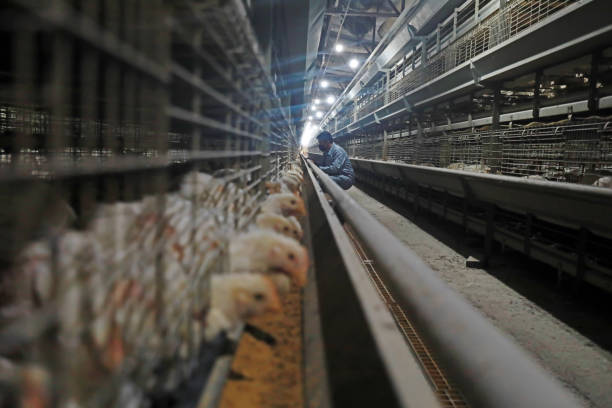
Finding Reputable Suppliers
Once you have a clear understanding of your needs and requirements, the next step is to find a reputable supplier of poultry cages. Consider the following factors when choosing a supplier:
Experience and Reputation: Choose a supplier with a proven track record of providing high-quality poultry cages and excellent customer service. Look for suppliers who have extensive experience in the poultry industry and a strong reputation for reliability.
Product Range: A reputable supplier should offer a wide range of poultry cages to suit different needs and budgets. This allows you to choose the cages that best fit your specific requirements.
Warranty and Support: Ensure the supplier offers a warranty on their products and provides adequate technical support. A good warranty protects you against defects and ensures you can get help if you encounter any problems with the cages.
Local Presence and After-Sales Service: Consider suppliers with a local presence or a network of distributors in your region. This makes it easier to access after-sales service, replacement parts, and technical support.
Customer Reviews and Testimonials: Read customer reviews and testimonials to get an idea of the supplier’s reputation and the quality of their products.
Price Quotations: Contact several suppliers and obtain price quotations for the cages you are interested in. Compare the prices and features carefully before making a decision.
The Importance of Proper Cage Management
Investing in the right poultry cages is only the first step. Proper cage management is essential for maximizing the benefits of your cage system and ensuring the health and productivity of your flock. Here are some key aspects of poultry cage management:
Regular Cleaning and Disinfection: Clean and disinfect the cages regularly to prevent the build-up of harmful bacteria and parasites. Remove manure and litter frequently and disinfect the cages with appropriate sanitizers.
Proper Ventilation: Ensure adequate ventilation in the poultry house to maintain air quality and prevent respiratory diseases. Regularly check the ventilation system and make adjustments as needed.
Monitoring Bird Health: Regularly monitor the health of your birds and take prompt action if you notice any signs of illness. Isolate sick birds and consult with a veterinarian.
Adequate Feeding and Watering: Ensure all birds have access to adequate feed and water at all times. Regularly check the feeding and watering systems and make adjustments as needed.
Temperature Control: Maintain a comfortable temperature range in the poultry house to prevent heat stress or cold stress. Use heating or cooling systems as needed to maintain the optimal temperature.
Lighting Management: Implement a proper lighting program to optimize egg production. Adjust the lighting schedule according to the age and stage of production of the birds.
Pest Control: Implement a comprehensive pest control program to prevent infestations of rodents, insects, and other pests. These pests can transmit diseases and damage the cages.
Adapting Poultry Cages to Local Conditions
Poultry farmers in Africa often face unique challenges due to the diverse climate and environmental conditions. Adapting your poultry cage system to these local conditions is crucial for success:
Heat Management: In hot climates, prioritize cages with good ventilation, shading, and cooling systems. Consider using sprinklers or evaporative coolers to reduce the temperature in the poultry house.
Predator Protection: Take steps to protect your poultry from predators. Use strong and durable cages with secure enclosures. Install fences and other barriers to deter predators.
Disease Prevention: Implement strict biosecurity measures to prevent the spread of diseases. Control access to the poultry house and disinfect all equipment and vehicles entering the farm.
Water Management: Ensure a reliable source of clean water for your poultry. Consider installing water storage tanks to ensure a consistent supply of water, especially during dry seasons.
Embracing Technology for Smarter Poultry Farming
The poultry industry is rapidly evolving with the introduction of new technologies and innovations. Embracing these technologies can help African poultry farmers improve efficiency, reduce costs, and increase profitability:
Automated Feeding and Watering Systems: Automate feeding and watering processes to reduce labor requirements and improve efficiency.
Climate Control Systems: Install automated climate control systems to maintain optimal temperature and humidity levels in the poultry house.
Egg Collection Systems: Automate egg collection to reduce labor requirements and minimize egg damage.
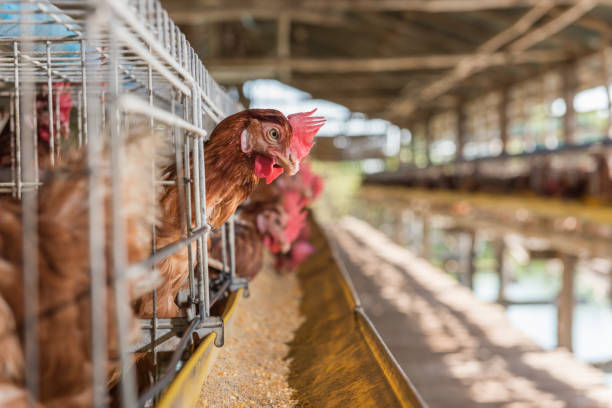
Manure Management Systems: Install automated manure management systems to improve hygiene and reduce labor requirements.
Data Monitoring and Analysis: Use data monitoring and analysis tools to track key performance indicators such as egg production, feed conversion, and mortality rates. This data can help you identify areas for improvement and make informed decisions.
By embracing technology and implementing best practices in poultry farming, African poultry farmers can unlock the full potential of their operations and contribute to food security and economic development in the region. Selecting the right poultry cages is a critical step in this journey, laying the foundation for healthier, more productive, and more profitable poultry production.




